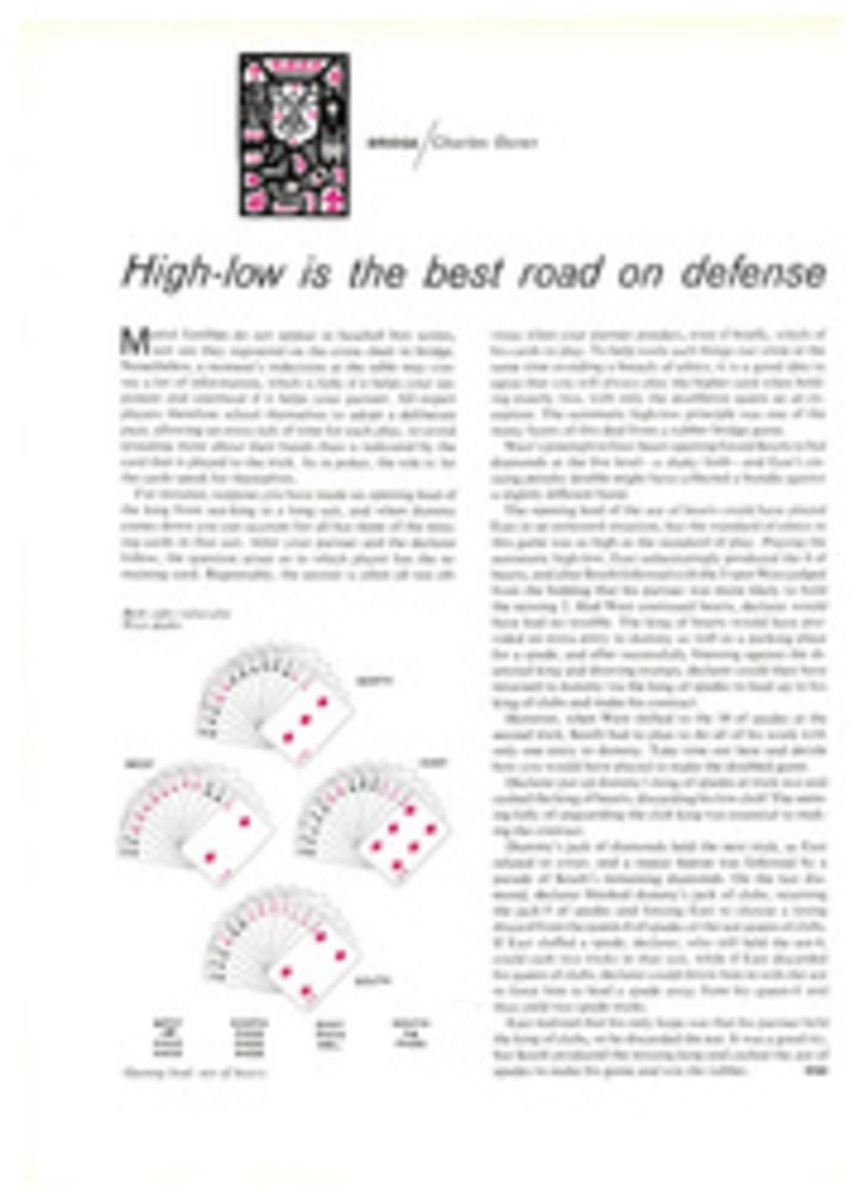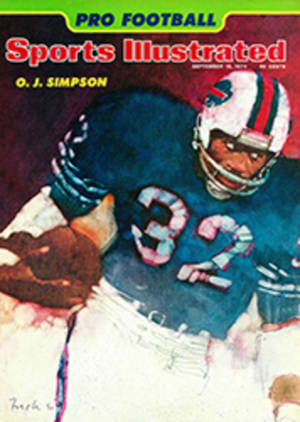
'WE SHOULDA RUN ONE MORE TEST'
The scenario could not have been more perfect if the star himself had written it—and many will say he did. The day was bell bright, the tension was nearly unbearable and magnificently orchestrated and the drama was of the highest order. Only the trajectory was low. Put them all together and they spell failure. Ah, but what a nifty failure, just the kind to generate another few million bucks the next time Evel Knievel sets out to conquer the Snake River Canyon.
Technologically, of course, it was the anticlimax of the decade. But who ever said that daredevils must always succeed? Sure, the sourpusses and literalists who ranted about ripoffs all through the months of buildup to Evel's big jump now have plenty more to grumble about during the months to come. But the plain fact is that Evel's failure to clear the canyon was far more exciting than a letter-perfect leap could ever have been.
After all, daredeviltry is not like prizefighting, where a rematch is often better than the original contest. If a daredevil fails totally, he is dead. If he succeeds, he can hardly generate much enthusiasm by mere repetition of his feat. But if he fails nobly—and only a little bit—that much more interest accrues to his next attempt. Whether Evel did it all on purpose or not is now beside the point: the truth remains that the "monster" he created out of whole cloth and hubris smiled upon him and was not slain.
All through the week that preceded The Great Leap Downward, Evel played his role to perfection. He was testy and gracious by turns, kindly to the common folk and wicked to the witless. Indeed, two days before the jump, Evel erupted like the Sky-Cycle's steam jet when an NBC television cameraman asked him to smile for the birdie. The next day the NBC staff sported T-shirts with the motto: "I don't smile when I don't want to." It was a warning to the 130-odd newspersons who descended on Twin Falls, Idaho to cover the spectacle. Evel dominated them with his quirkiness like a master of foxhounds. His frequent press conferences were long on rhetoric and short on details—naturally enough, since what Evel communicates is a spirit far racier than lead-footed fact.
That spirit was evident in Twin Falls as the big day neared. Though there were plenty of straight types in sensible sedans gravitating toward the canyon, the influx was dominated by the roar of motorcycle engines. Gaudy choppers, burly hawgs, strident dirt bikes swept into town. It was Biker Heaven. The night air popped and sizzled to the sound of beer cans and two-stroke engines.
However, for all the national media interest in the jump, the actual attendance—both at the site and in the closed-circuit television outlets—was disappointingly low. Though Top Rank, Inc., the major promoter of the show, was loath to release figures, an eyeball analysis of the canyon-side crowd produced an estimate of no more than 15,000 onlookers. Madison Square Garden, one of the largest of the TV sites, counted only 7,000—which is 12,000 short of capacity. Still, those who did turn up—on the spot, at least—were confirmed Evel freaks.
Temperatures under a cloudless sky rose to the 90s and an errant breeze from the Northwest kicked up fine tan grit that turned the canyon rim into a latter-day dust bowl. After an hour of dusting, everyone looked prematurely gray and spoke with an audible rasping of the molars. A beer crisis quickly developed.
Like so many great American inventions—the cotton gin, the Kentucky rifle, the atomic bomb—this orchestration of just plain folks was practical and pretty to look at. At one point a naked young lady mounted the shoulders of her gallant escort and paraded through the crowd for the delectation of the multitude. Another nubile nude was hurled over the fence into the press compound. Finally, after Evel's personal Lear jet wigwagged its way down the canyon announcing the great man's imminent arrival, those outside the press and television compounds began a zesty assault on the fragile fences that kept them from the canyon rim. Fortunately the management had hired 150 sturdy motorcycle-gang types to beef up security. Bare-chested toughs with bike chains for belts stood shoulder to shoulder with shotgun-armed security guards, holding back the barbarians at the gates. "Odd, ain't it," said one guard to a tattooed biker, "they look just like you guys."
When Evel finally emerged, resplendent in his red-white-and-blue jump suit, the crowd calmed, caught up in the harrowing realization of the moment. His voice, echoing through a hundred loudspeakers, was as incoherent as the event itself. All one knew was that it was...well, momentous. To solve the clumsy problem of mounting the Sky-Cycle without detracting from his dignity, Evel had invented the Evel Knievel Freedom Crane, a star-spangled hoist with a seat suspended from its cable. He climbed into it, then swung lazily, gracefully over the heads of the throng. He stuck out his right arm—thumbs up! A thousand thumbs answered him, and many more dust-choked voices.
For those on the ground looking up, it was a memorable sight. For those in theaters looking on, it was a scene of mind-boggling hokiness. The cameras locked on Knievel in his bosun's chair, the landscape swinging by, while in a voice-over the syrupy ballad of Evel Knievel was sung, a tune that lent the ultimate, stirring touch to prejump proceedings that could give hyperbole a bad name. Moments earlier, television gadfly David Frost had shown his degree of expertise as jump commentator. He pointed to the Sky-Cycle pressuring up and asked Knievel, "Uh, is that steam a good sign?" A rumpled priest offered up an earnest prayer for "a man with a dangerous dream." Elsewhere in the show another voice-over had Evel reading his own poem about his own heroics. And finally, caught up in the heady, star-spangled atmosphere of it all, one commentator murmured, "A lot of people thought this was just a publicity stunt."
Evel was into the rocket at 3:20 p.m., only 15 minutes behind schedule. For five minutes his blond curls waved in the vagrant breezes while he buckled up, then donned his helmet. The crowd followed every movement as if it were the crucifixion. A high school band in silver-and-purple uniforms, possibly fatigued from its rendition of The Star-Spangled Banner, looked on wearily. The great moment was approaching. Bob Truax, the aerospace engineer who had designed the Sky-Cycle and who gave Evel an 80-20 chance of survival, climbed down the stairs from the Sky-Cycle and the great daredevil was alone with his demon.
A long wait....
A longer wait....
And this is both the absurdity and the greatness of the event: time did strange tricks in those endless moments. Men who had seen fine racing drivers die, drivers far more talented than Evel and operating machinery far more sophisticated than his Sky-Cycle, found themselves quailing. This was the theater of thrust. This was nearly as scary as the start of the Indy 500—maybe more so, because only one life was involved here, the focus of attention, the end point of empathy. One thought of his hand on the launch button, of his inner conflicts, of the moment he said yes and punched it.
The rocket went whoosh. It was precisely 3:36 p.m. A great white gout of steam and noise fanned out and there was an acceleration far exceeding that of a moon shot. And then, in the midst of the steam, not two-thirds of the way up the 108-foot launch ramp, there was the startling sight of the drogue parachute popping open, tugging the main chute after it. Knievel was up, but far too slowly, the steam fading as the main opened, white and writhing before it filled. He was not nearly across. A Northwest wind caught the rocket and it sank slowly, swinging, twisting into the canyon.
"He's going in the river," screamed the crowd. "Oooooooooh!"
They crashed the fence and surged to the canyon rim. The onlookers were no longer beery invaders of Twin Falls; they were human beings together, anxious for the fate of a madman cum hero.
Within minutes Knievel was 'coptered up, deposited, crushed by the throng. He did not seem to know that the drogue had popped prematurely, insisting he had triggered it in the air.
"I don't know what happened," he said. "The cycle went sideways. It turned...I saw the canyon wall come out of the sky. I let the chute go." He had crashed into the canyon's near side, suffering only a few scratches and a much subdued ego.
After a rampside conference with his crew ("We shoulda run one more test," someone said), Evel noted, "Mr. Truax told me that the parachute blew off on launch. We don't know why, but he did tell me a long time ago if it ever got upside down and I saw the canyon wall for me to blow the chute open and I thank him for that. I'm glad to be back in one piece, believe me."
There are those who might maintain that Evel purposely popped his chute the moment the rocket fired. What better a way to build suspense for another attempt—a rematch against the canyon? But if he did, it was an act of daring and pinpoint precision far greater than a fully successful shot might have been. The slightest miscalculation and he almost certainly would have drowned in the Snake or been crushed to death.
An hour and a half after the shot, Evel returned to his motel. He was just a touch pale, a touch weak in his handshake. The right side of his nose and face wore shallow scratches from the underbrush on the knoll where he finally landed.
"Bob Truax didn't fail," Knievel said, now cognizant of what actually had happened. "It was the metal in the parachute container that failed. I had the parachute-release stick tucked under my leg and it never got loose. That container got ripped off on the ramp, or else just popped under the thrust."
"Well, you'll get her the next time, Evel," said a well-wisher.
Evel looked doubtful.
Going into his room, he seemed almost humble. "I'm the luckiest man in the world," he said. Of course, he always has been—and that is the best hype of all.
PHOTO
TWO PHOTOS
Powering away but popping its chute too soon, Sky-Cycle carries Evel up, up and...down.
PHOTO
Trailing chute, cycle bounces down cliff.
PHOTO
Knievel and his rescue crew head for the shore where helicopter will whisk him away.
PHOTO
The bike crowd conducts its own launching.

